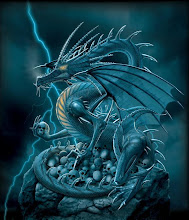Ever heard a cat loves playing with water? Well, in Malaysia, most cats simply hated water, whether it's a sprinkle, a jet of, or a shower of water. However,out there, some cats really don't mind water. Ever heard of that? Cats swimming, cats running out to greet the rain, and here, I copy a story that I came across while reading my mom's old Reader's Digest. Enjoy!
My cat adores drains. There is something about water whirling away down a pipe that he finds fascinating. When the toilet door is closed, he waits outside, his nose pressed to the crack beneath. At the sound of the flush, he springs back until the door is opened, then rushes in and places his front paws over the toilet bowl. There he stares, transfixed, at the wonders of modern plumbing.
Sometimes he sits in the kitchen sink, peering down the drain, his orange tail waving over his head.

Watching me run a bath one night, he discovered how to make this miracle work on his own. As I put the plug in, he watched my every move. I turned on the tap and, suddenly, a light bulb went off in his little cat brain. Delicately, he reached out and plucked the plug from the drain, watching as my bath water drained away. Exasperated, I replaced the plug, and turned the tap on again. Once more, when the water got almost to his stomach, he reached under and pulled it out.
I had to laugh. I lifted him out of the tub. But a moment later he was back in, the plug gone, and his tail swishing merrily as the water drained around his ankles. Now, he's never allowed in the bathroom. Instead, he watches me under the door, waiting for the sound of water draining away.
By Amy Willing
Reader's Digest March 2012
Read more ...








